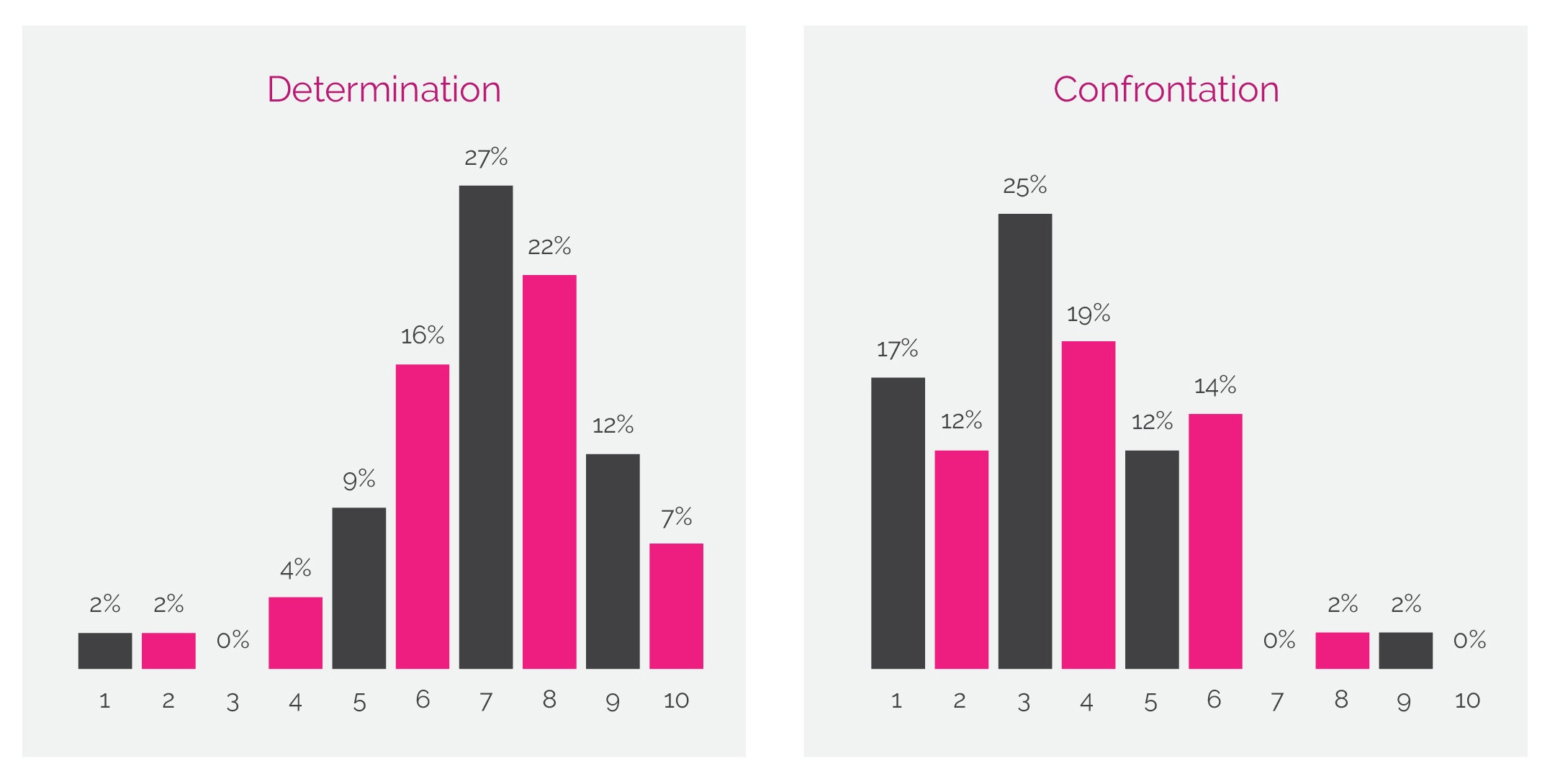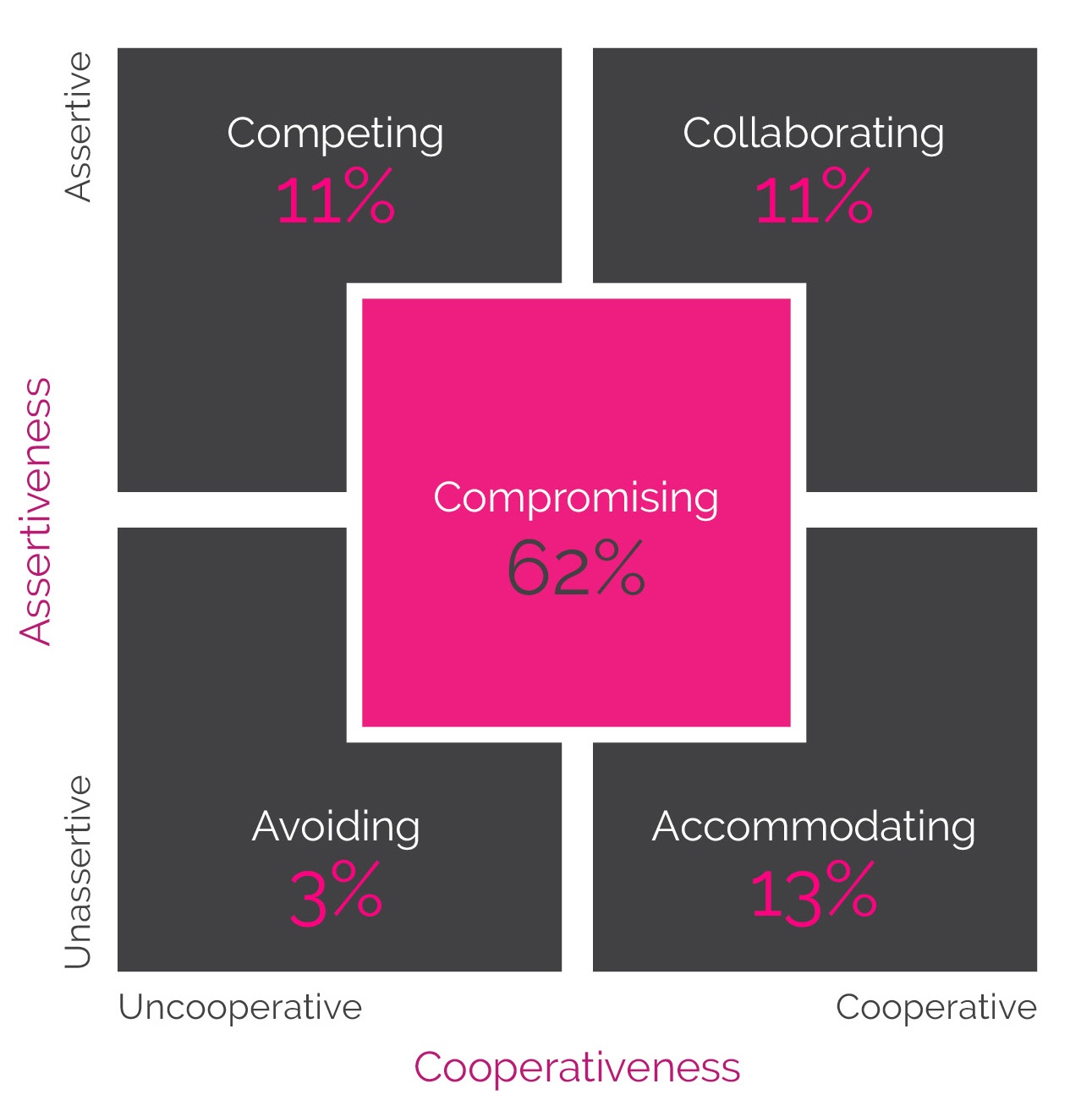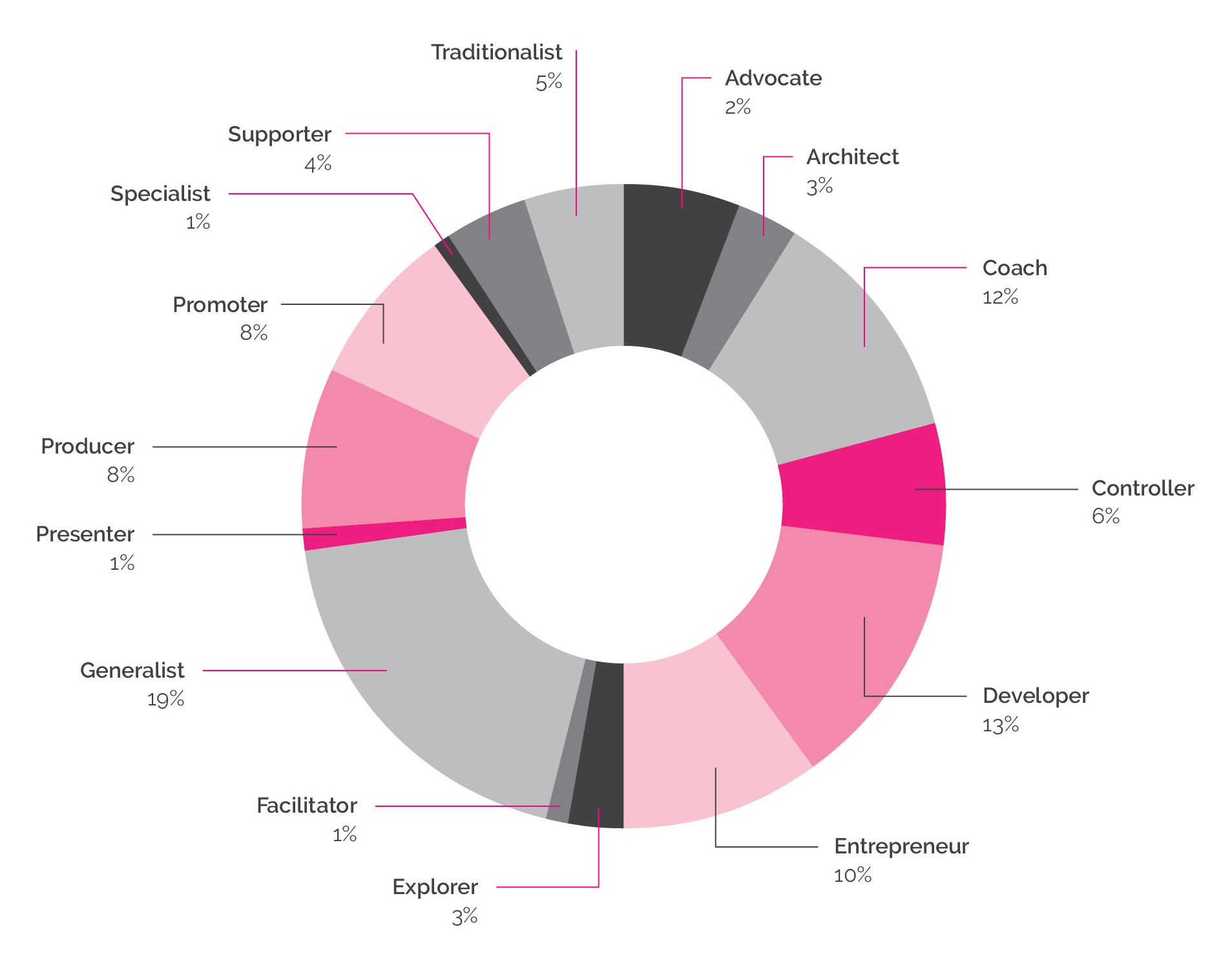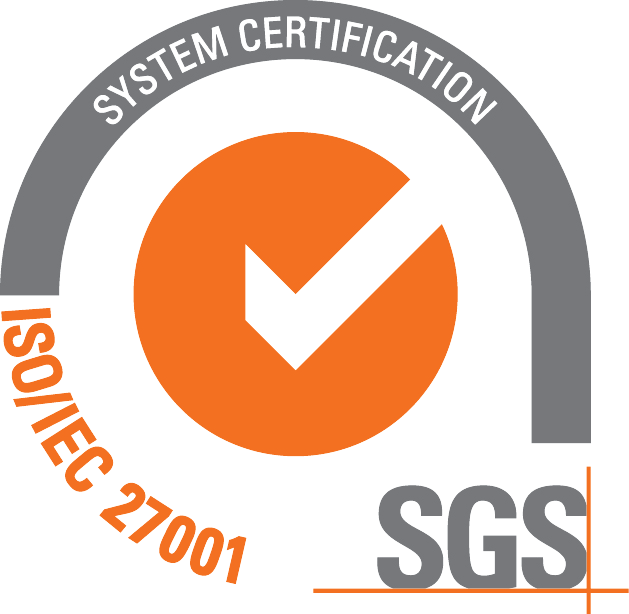EMPOWERING YOUR PEOPLE TO THRIVE
Selecting and integrating new talent
An individual’s characteristics, attitudes and patterns of behaviour are some of the key ingredients that determine how well they perform.
Recruitment should start with identifying what the ideal candidate will look like. Do you need someone who can make quick decisions? Or do they need strong attention to detail? Personality profiling helps us determine whether an individual’s natural preferences align with the demands of the role.
Of course, personality isn’t the only driver of behaviour and job performance. But an understanding of personality traits serves as a basis for getting to know a candidate better. It helps steer discussions at the interview stage, allowing you to get a deeper insight into their strengths, risk factors and character, and to investigate their adaptive behaviours.
For instance, just because a person scores high on Will, which would suggest they have a tendency to run with ideas quickly, doesn’t mean they haven’t learned to take a more considered and analytical approach to their work. This is something you can dig into during the interview.
It’s not just about getting the right person through the door either. Understanding how a new employee prefers to learn, work and interact gives you a steer on how best to integrate them into the business and gives them the best chance to flourish. It helps you pair them with a line manager who will be more likely to help them achieve success or place them into teams where they will be more likely to excel. If you can integrate new hires quickly, you set them up to be more engaged and productive from the outset.
Developing effective leaders
All successful organisations need great leaders, but according to research by Deloitte, 86% of business leaders say that leadership is their biggest organisational challenge.
Developing great leaders has always been a crucial issue for organisations, but in today’s business environment the issue is even more acute. Technology advancements, the political climate, and changes in the social demographics of the workforce are piling even more pressure on organisations to find leaders that can navigate a business through this complex web of change.
With the right guidance and encouragement, anyone can become a great leader. The most successful companies recognise this and focus on developing leaders at all levels of the organisation and different career points. First-time leaders, as well as Executive level leaders, are offered appropriate coaching and development programmes that will help them to be the best they can be. This is where understanding their natural preferences, strengths and development challenges can be valuable.
Personality profiling provides a platform for individuals to explore their core personality, work preferences and strengths. It helps them identify how others may perceive them, how they will work with others, and where they will need to adapt to suit the team they lead.
As leaders become more senior, they get less and less feedback. Facet5 shines a light where it may be needed to show them how their behaviour may be having a detrimental effect on team performance. This exercise of self-reflection provokes them into making changes and adaptations to make them a better leader.
/shutterstock_407349148.jpg)
Managing talent within the business
Research shows that companies with engaged employees outperform their peers by up to 202%. So how do we create levels of employee engagement?
The reality is there is no ‘one size fits all’ solution. Organisations have to be more sophisticated about how they motivate and engage people who are inherently different.
Personality profiling allows us to see how they are all different, so we can devise engagement strategies and talent development plans that are personalised to individuals.
By shining a light on an individual’s natural preferences, strengths and potential weaknesses, we open up the conversation to goals for personal and professional development. From a manager’s perspective too, it enables them to execute target setting, feedback and appraisals with a smoother approach in a communication style that works best for the employee.
Facet5 helps organisations and managers to identify the environments and situations individuals will thrive in. Equally, it allows us to put people in situations that will help them to grow. For example, if someone is low Energy, they may not want to deliver a presentation to a room full of people, but actually, it’s a good learning area for them.
Likewise, if you only get people to do things they do well or easily, you’re not giving them any learning either. Facet5 helps you identify opportunities to stretch people, so you end up with a more rounded team of people who are more capable across the board.
Creating high-performing teams
Constant disagreements can cause teams to fragment, and these cracks can appear as chasms across the rest of the organisation.
Facet5 provides insights to help people prepare for when disagreements occur and for how to get through them. It helps us recognise that we all have different ways of reacting to stress and pressure. While some people are open and vocal about frustrations, others will retreat inwards and become quiet. Awareness of these differences means people can predict and understand the behaviour of others.
Building effective, high-performing teams is not just a case of having people with the right skills and the technical ability to fulfil the necessary functions. You need to take into account the personalities, values and preferences of each team member. These are often referred to as the “soft skills”. Yet they feel far from soft when they are causing conflict, slowing down decision making and making the team a highly uncomfortable and unsafe place to be.

What's more, teams today are very different to the traditional teams of the past, where everyone sat together and worked together closely. Now, we are used to virtual teams and interchangeable teams with people from different departments and backgrounds coming together to deliver on a task or project. Add in the fact we now find up to five generations in the workplace, we need ways of ensuring everyone from Gen Z, to Millennials, to Baby Boomers and the Silent Generation can understand each other and work together effectively.
Ultimately, teams need to work on being a team, and personality profiling provides you with insights to accelerate this bonding process. It helps people understand why they approach their work in the way they do, why others may differ, and what this could mean for the overall team performance. It offers a universal language that helps people better understand each other, and allows a more cohesive and effective unit to develop.
In teams where people understand each other, conflict can be mitigated because people will be better prepared for someone else’s approach to a task or how they might react to a certain comment. For example, if a person appears to be overly controlling, but colleagues know this to be a personality trait playing out as opposed to unreasonable behaviour, then tension may be avoided.
And when it comes to appointing tasks, if we know each team member’s natural preferences then we can delegate based on what makes people ‘tick’. This gives the team a better view of their collective strengths and potential blind spots so they can make adaptations when necessary to deliver what is required.
.jpg)


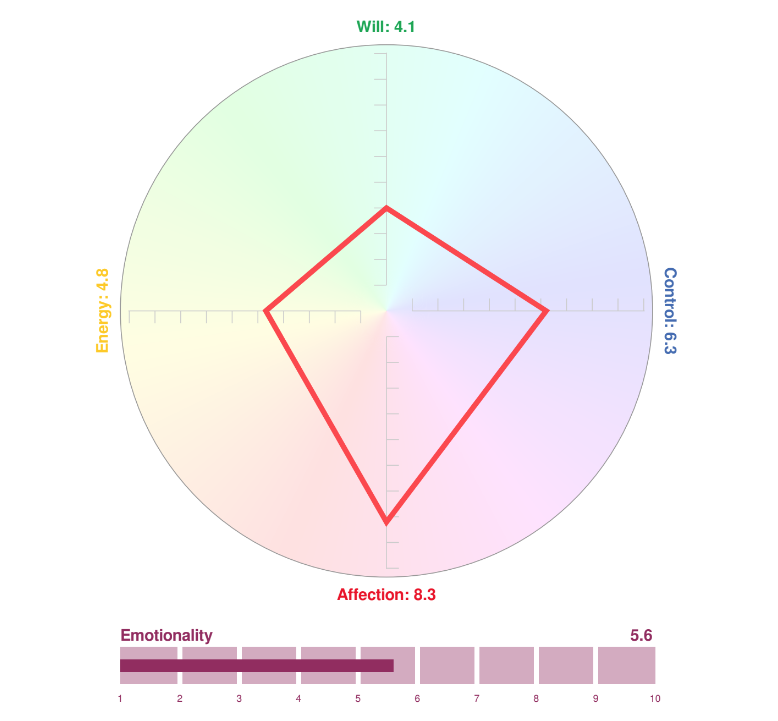
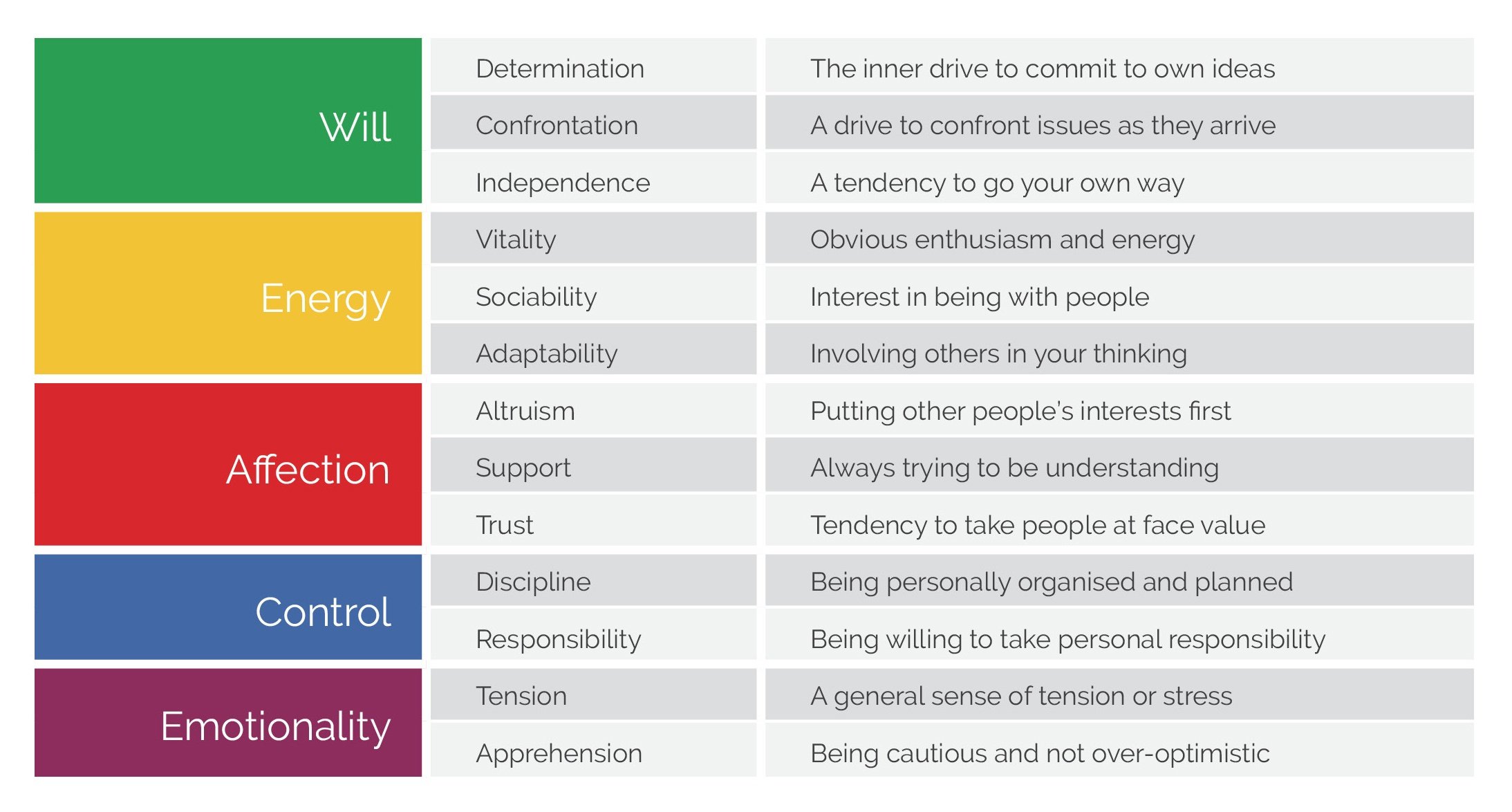



/shutterstock_407349148.jpg)

.jpg)
